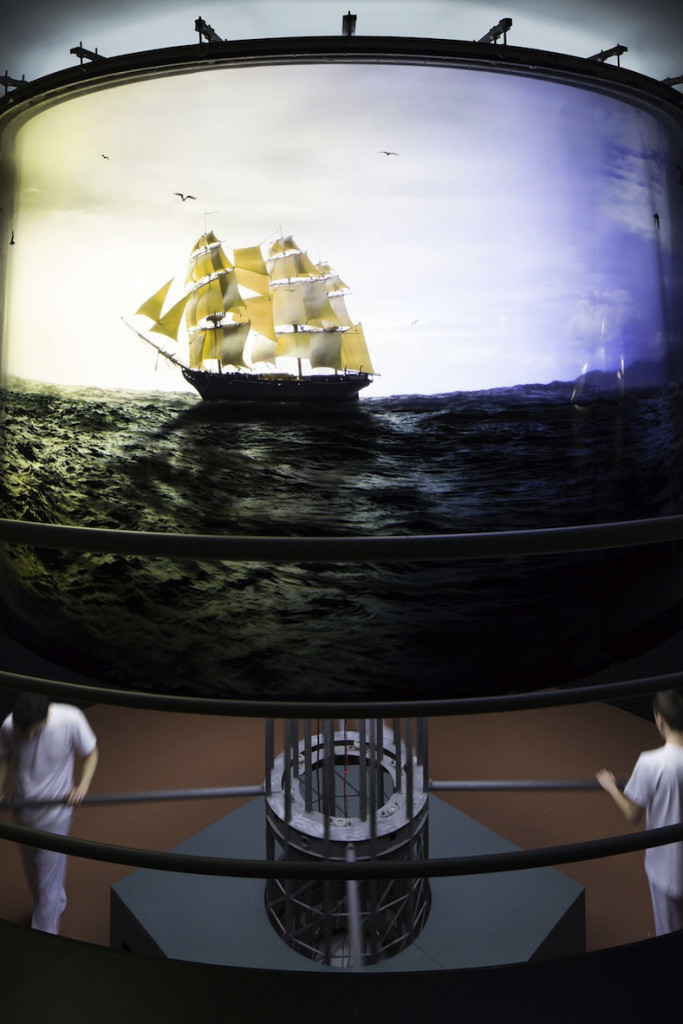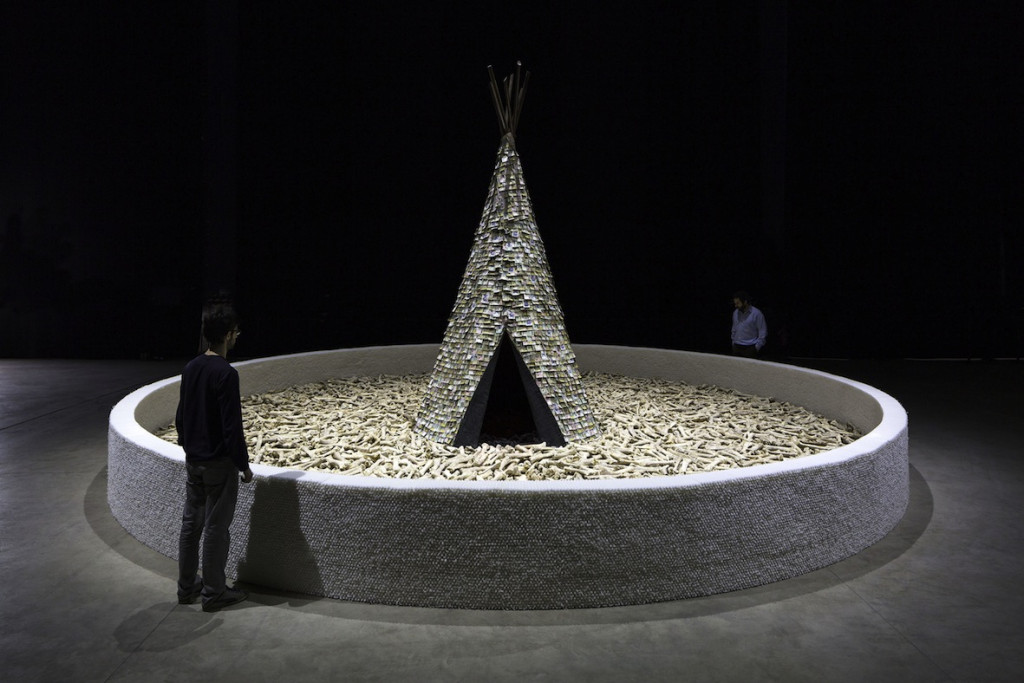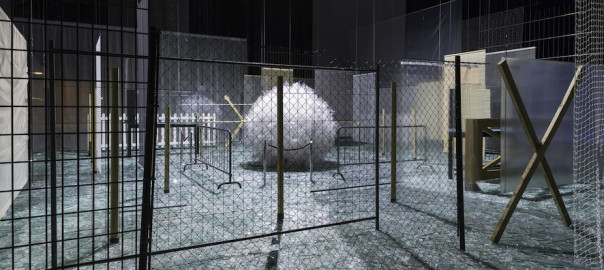Today at HangarBicocca, Milan, it has opened Installations by Cildo Meireles, an “installation of installations”, “cacophonic and experiential”, in the words of its curator Vicente Todolí. Twelve works by Brazilian artist Cildo Meireles occupy the space of HangarBicocca, ranging from a microscopic cube with 9 mm sides (Cruzeiro do Sul, 1969-1970) to a gigantic labyrinth which includes iron fences, barbed wire and broken glasses (Através, 1983/1989). The exhibition is there to stimulate the senses, but it is the intellect that is constantly challenged by Meireles’ artworks.

The installation [Abajur] is based upon a kind of paradox between an idyllic landscape and situation – a beautiful sea, a perfect sky, birds and a galleon, appear on the outside of a rotating lightbox (a sort of Chinese lantern) – and the movement and light which come from the human labor that powers the work. There are four people who push a dynamo. I think that it is a very clear piece. I wanted to make a large-scale lamp that apparently shows a beautiful image, but is actually a comment on how society is built. It’s always exploiting human labor. Cildo Meireles
Slavery and colonialism, exploitation and power: A clear message comes from Cildo Meireles’ Abajur (1997/2010). That is the world; that is Brazil. We should not be tricked by the charming landscape portrayed in the artwork nor by the nostalgic cries of the seagulls coming from it, as much as we should not be tricked by the image of Brazil as a place of sunny beaches, samba music and growing wealth. If the lantern keeps turning and pleases the eyes of the lucky spectators, it is because someone (or, better, an endless series of someone’s) has been turning it for us for centuries. Art cannot change the world, that is for sure, but making everyone aware of the reality in which we live, that can do.
.

I like to use materials that are also symbols. I think that is important to use materials that people recognize immediately. Cildo Meireles
Bones, banknotes, candles, coal, the noise of an electric saw. As much as Olvido (1987-1989) is attractive to eyes, it is repulsive to the ears and the nose. The perfect geometry of the architecture, the shades of white and gray and black, the warm feeling of being invited to enter the open tent. All of that is a well-designed device to make the distracted passer-by (who are not that uncommon in art exhibitions) approach the artwork with a curious but relaxed mind. However, as soon as you get to the proximity of the artwork, a bitter smell of rotten bones goes straight to your head and does not leave you. Indigenous people, financial capitalism and church candles: the history of the Americas through the eyes of the colonized. The installation, as Meireles says, combine three key elements: “material power, spiritual power, and a kind of unavoidable, historically repeated consequence of this conjunction, which was tragedy”.
Luigi Galimberti Faussone
Installations by Cildo Meireles
Fondazione HangarBicocca, Milan
27th March – 20th July 2014
[Pictures, from the top: Através, 1983-1989; Abajur, 1997/2010; Olvido, 1987-1989. All are: Installation view at Fondazione HangarBicocca, 2014; Photo Agostino Osio, Courtesy Fondazione Hangar Bicocca, Milan; Cildo Meireles.]


